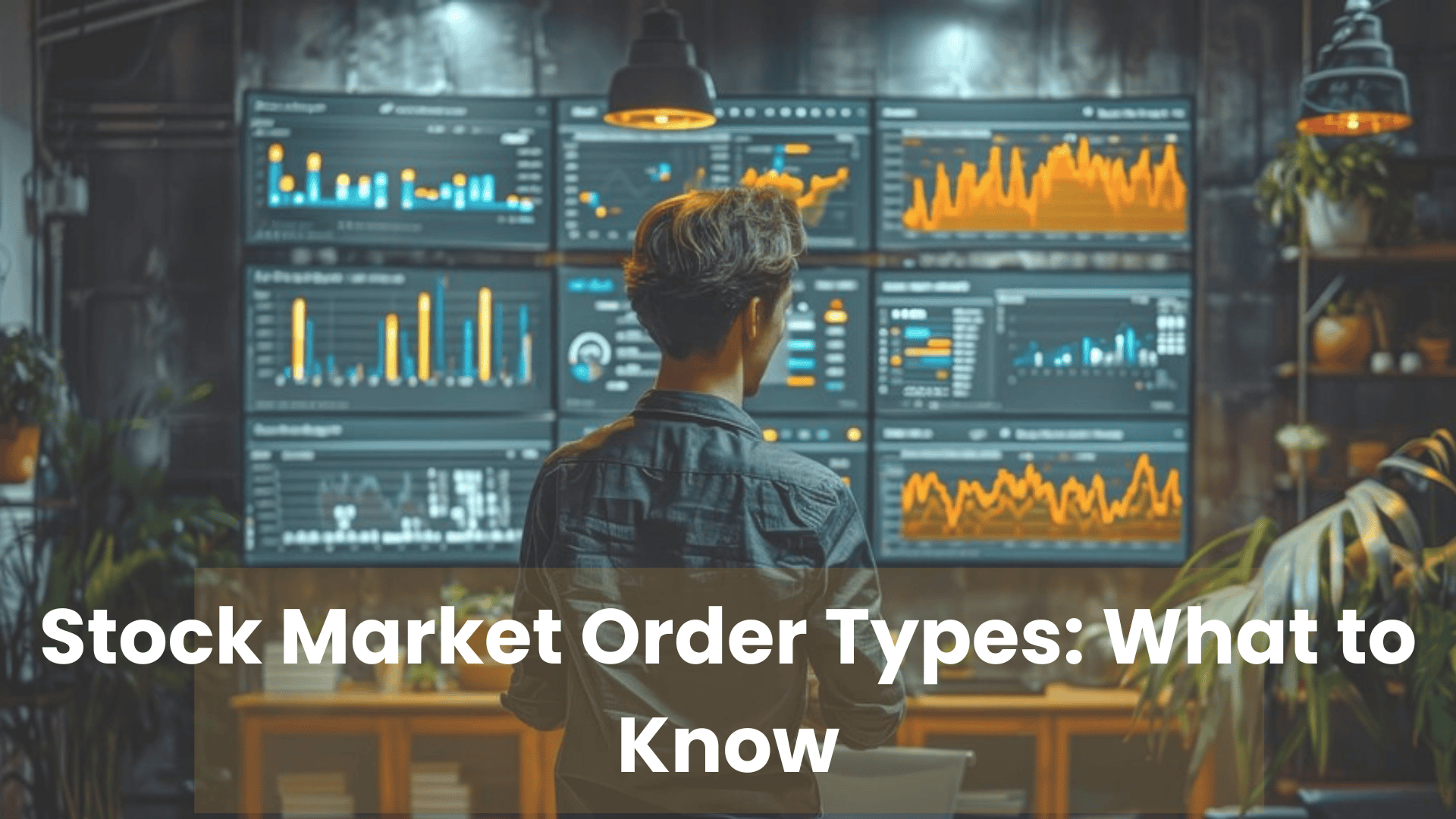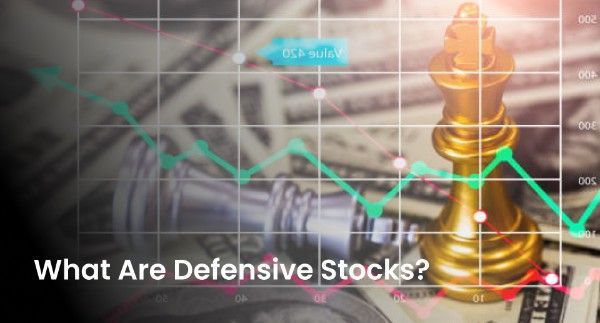Stock Market Order Types: What to Know

Did you know that as a trader in the stock markets, you can place several different types of orders depending on your investment goals and the market conditions? The different types of orders in the share market may confuse you if you do not know what they mean, how they are placed and when they are best used.
Fortunately, you can learn about all these crucial details in this article. Check out the different stock market order types in detail to find out which ones may work best for your next trade.
What is a Stock Market Order?
A stock market order is an instruction placed through your trading account with the stock exchange, requesting the purchase or sale of a specific number of a company’s stocks. While this much is common among all stock market orders, they vary greatly in other areas like the price of the trade, the terms of the order and the purpose.
Whether you are a beginner or a trader with some experience, it is never too late to learn about the different stock market order types. This information can help you improve the way you trade in the stock market, so you can control your losses and optimize your profits better.
Different Stock Market Order Types
Let us discuss the different types of orders in the stock market in detail, so you can make smarter choices about which type of trade to place in different market conditions.
Buy Order
A buy order is precisely what it sounds like. It is a trading request for the purchase of a specific number of shares of a company. Placing a buy order means you open a long position.
When to use it: This stock market order type is best used in a new or ongoing bullish market, which is marked by increasing prices. That way, you can buy low and sell high, when the price rises further.
Sell Order
A sell order is the opposite of a buy order. You place this order when you want to sell your existing holdings. Selling is also referred to as shorting when you place a sell order without holding the stock (aiming to buy it back later at a lower price).
When to use it: If you are placing a sell order to transfer your shareholdings, it is best done in a market that is about to turn (or has just turned) bearish. Similarly, if you want to initiate a short trade, a bearish market is the ideal phase to execute this order.
Market Order
In a market order, you do not specify any price at the time of placing the order. So, the order is executed at the market price prevailing at the time. This is the current market price of the stock, and in highly volatile markets or for highly liquid assets, it may change rapidly.
When to use it: This type of order in the stock market is suitable if you do not have any specific price requirements or if you want to immediately execute the trade. It is also better for smaller orders than larger ones.
Limit Order
In a limit order, you need to mention a specific price level when you place the order. If the price attains this level or a lower level, your buy limit order will be executed. Similarly, if the price attains the set level or a higher level, your sell limit order is executed.
When to use it: You can use this type of order in the share market when you expect that you may be able to buy at a lower price or sell at a higher price than the current stock price. It is also useful if you want to execute your trade at a very specific price only.
Immediate or Cancel (IOC) Order
As the name indicates, this type of order is either placed immediately or cancelled. If only a part of the order is executed, the rest of it is cancelled. For instance, if you place an IOC order to buy 50 shares of a company and only 20 shares are available, the order to buy the remaining 30 is cancelled.
When to use it: If you want to execute a sizable order at a specific price or the prevailing market price, an IOC order can help you leverage the current market conditions before they change.
Stop-Loss Order
A stop-loss order is a type of order in the share market that helps you limit the potential losses on a trade. It essentially triggers an exit if the stock price attains the stop-loss limit specified in the order. There are different types of stop-loss orders too, such as:
Stop-Loss Market Order
Here, the order is converted into a typical market order as soon as the stock price reaches the stop-loss limit.
Stop-Loss Limit Order
In this case, the order becomes a limit order when the stock attains the stop-loss price. This gives you more control over the trade.
Trailing Stop-Loss Order
As the name indicates, the stop-loss price in this order is not fixed. Instead, the stop-loss limit trails the stock price. This is because it is set at a specific percentage or amount below the market price.
If you take a long position and the asset's price rises, the stop loss moves up by that percentage. Conversely, if the price drops by the set percentage, the order triggers and the asset is sold. This method helps you lock in profits and limits potential losses.
When to use it: Ideally, you need to use a stop-loss order with every trade to limit the losses. Without a stop-loss limit, you may end up losing more than expected.
Good-Till-Triggered (GTT) Order
A Good-Till-Triggered (GTT) order remains active until specific conditions are met. You set a target price and a stop-loss price for a stock. The order only gets executed when the stock hits either of these prices, at which point it triggers a buy or sell action. Unlike regular orders, which expire at the end of the trading day, a GTT order stays open until it's triggered or cancelled.
When to use it: You can use this type of order in the stock market if you want to automate your trades based on specific price levels without constantly monitoring the market.
Robo Order
A robo order is an automated trading order executed by an algorithm based on predefined conditions like price time or volume. It can help you enter or exit positions without manual intervention. The algorithm continuously monitors the market and executes trades when the set criteria are met.
When to use it: This stock market order type is suitable if you need to execute precise and automated trades based on specific conditions or in large volumes.
After-Market Order (AMO)
This type of order in the stock market is placed after active trading in the markets has been completed for the day. The window after the markets close on one day and reopen on the next is known as the after-market trading time.
When to use it: You can use this stock market order type if you want to take advantage of any new developments that have occurred after the markets have closed.
Intraday Order
An intraday trading order is placed for trades that need to be closed within the same trading day. This is a separate category of trading that helps you leverage short-term intraday market fluctuations.
When to use it: This type of trading order is best suited for intraday trades who want to square off their positions within the same day and avoid overnight risks.
Margin Order
A margin order allows you to buy or sell securities using borrowed funds from a broker, so you can trade more than your actual capital. You provide collateral (usually cash or securities) to secure the loan. This leverage amplifies both potential gains and losses. If the trade moves against you, the broker may issue a margin call for additional funds to maintain the position. Alternatively, they may liquidate the assets to cover the loss.
When to use it: Use this type of order in the stock market when you want to increase your buying power, but only if you’re aware of the risks.
Conclusion
Understanding different stock market order types is crucial for making your trades more effective. Whether you're buying, selling or setting specific conditions, knowing and using the right type of order can help you manage risks and seize opportunities in the market easily.
If you want to stay ahead of the curve and make the most of market movements, the tools available on Motilal Oswal’s Research 360 platform can be invaluable. This platform offers in-depth analysis and insights that help you choose the right order types for your trading strategy. By integrating these insights into your trading plan, you can make more informed decisions, optimize your trades and ultimately achieve potentially better results.

















